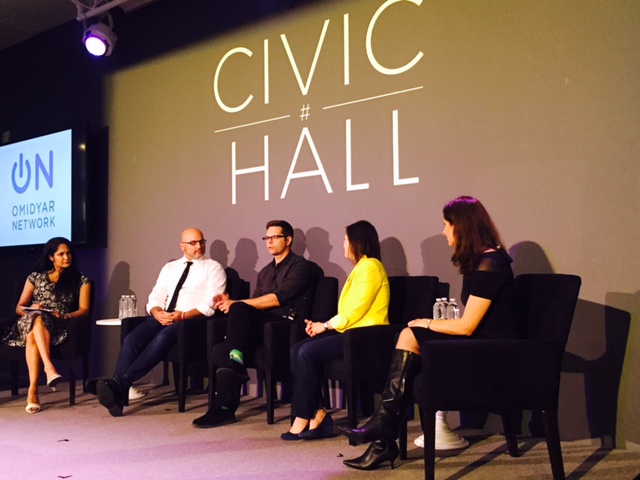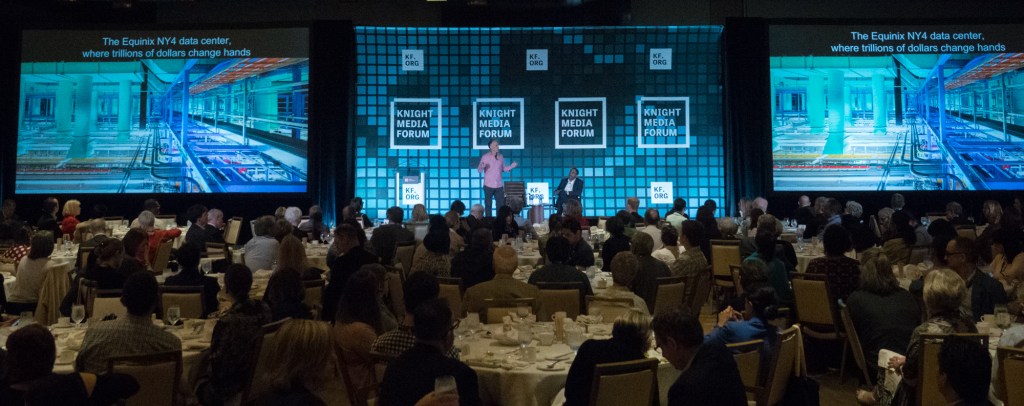
Building a better democracy with civic tech
Check out the Storify from the event here.
I was in New York Tuesday to attend the Omidyar Network’s conference on civic tech sustainability at the new Civic Hall. I was part of a panel on funding civic tech, with Shaun Abrahamson, Stacy Donohue, Beth Engel and Sarayu Srinivasan. In preparing for the panel I sketched out the notes below about how we approach civic tech at Knight Foundation.
At Knight, we care about ensuring that people have access to the news and information that they need to lead their lives in a democracy. As the traditional mechanisms of news delivery and consumption change, we’re working to help support and understand new approaches for building and maintain an informed citizenry. In our Media Innovation program, we’re particularly interested in how the American experiment with democracy can be perfected through new digital tools and behaviors. We believe the Internet opens up opportunities to improve the ways in which citizens can work with their government, and vice versa.
We have a couple of methods for asking these questions. First, we supply small, early-stage funding, and support the testing of ideas, through the Knight Prototype Fund (the next deadline to apply is May 15.) Second, we conduct themed challenges, often in collaboration with others, seeking ideas that address particular needs and opportunities. We’re currently in the latter stages of our Knight News Challenge on Elections; previous challenges have focussed on leveraging libraries to build more knowledgeable communities, strengthening the Internet, and on improving the way citizens and governments interact. (We’ll launch the next News Challenge this fall.)
In addition to seeding new ideas and experiments, we seek to help support the transformation of civic institutions in the digital age. As a result, when we work with civic innovators who work outside of institutions, we think about how their work impacts, and is useful to, people inside of governments, libraries and legacy news organizations. Recently, we’ve noticed that the startup projects that are succeeding tend to be those that are able to empathize and collaborate with existing incumbents in the field, such as vendors, government workers and elected officials. (Recent examples include the Open Gov Foundation and Democracy Works.) By comparison, those outside projects that fail to build those collaborative bridges are more likely to struggle.
During the panel I wondered if we (the field as well as the foundation) are being audacious enough. Kanye West’s recent tweet caught my eye:

Are we focused too much on the opportunities in front of us today and not enough on dreams of what could be? How might we be riskier, faster, more impatient about leveraging these new digital tools and approaches to build a better republic? We in philanthropy are in a privileged position to think longer term, and to take bigger gambles that can positively impact society. I think we can do more.
John Bracken is vice president of media innovation at Knight Foundation. To follow the conversation from Omidyar’s“Building the Business of Civic Tech,” follow #civictech. For an overview of the civic tech landscape, check out Knight Foundation’s report, “The Emergence of Civic Tech: Investments in a Growing Field.”
Recent Content
-
Artsarticle ·
-
Artsarticle ·
-
Community Impactarticle ·


